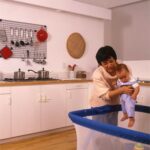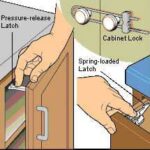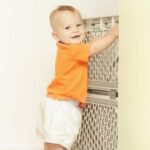This helpful buying guide provides information on safe baby and toddler toys. Safety tips about small toys, age-appropriate toys, electrical toys, and more.
Toys make learning fun, and the favorite ones get hard use. Many of today’s toys are not only educational and durable, but, fortunately, also quite safe if played with as the manufacturer directs.
Most have been constructed according to safety criteria established by the Toy Manufacturers of America, Inc. (TMA), or the U.S. Consumer Product Safety Commission, though the standards set by the TMA are voluntary. By law, any toy that is painted must have a nontoxic finish.
Here are some other safety considerations to the purchase, use, and storage of children’s toys:
• Age-appropriate toys. The basic rule of toy safety is to make sure they are appropriate for the age level of the child who plays with them. Today’s toy manufacturers label toys with recommended age ranges. Older siblings’ toys and other older kids’ possessions need to be kept away from small children. Always check toys and their packaging for descriptive or cautionary labels before making your purchase.
• Cords, strings, and ribbons that might end up wrapped around a baby’s neck need to be removed or shortened to less than 10 inches long.
• Small toy parts can be swallowed by a tot, cause choking, or become lodged in the ear or nose. A CPSC regulation bans small parts in toys manufactured for children under age 3.
The ban covers such things as squeakers in squeeze toys and removable eyes and noses in stuffed animals and dolls. Baby rattles must be large enough that they can’t become lodged in a baby’s throat and constructed so that they can’t separate into smaller pieces.
• Check older toys carefully for sturdy construction and good, solid condition. Make sure that no small parts or stuffing could come loose. If painted, make sure the finish is nontoxic.
• Balloons are not safe for small children to play with unless under close supervision. All bits of a popped balloon should be immediately thrown in the outdoor trash. Aluminized polyester film kites (now banned by the CPSC) and balloons pose the risk of electrocution should they contact power lines.
• Points, sharp edges, and projectiles—it goes without saying—can cause harm to kids of any age. Be especially watchful for toys that can break, exposing sharp edges. If a toy does break, take it away to either securely mend or discard
• Electrical toys, usually labeled for use only by kids older than 8, require caution and your supervision.
• Wheeled toys on or near a staircase could cause a serious accident.
• Avoiding toy clutter. Teach children at an early age to put away toys after play. It’s a good safety habit, because it cuts down the chances of stumbling over toys, as well as breaking them.
MORE ABOUT CHILDPROOFING:
Baby-proofing a Baby or Toddler Room
Childproofing a Bathroom
Childproofing Decks & Porches
Childproofing Home Office or Activity Areas
Childproofing Room-by-Room
Childproofing Stairs
Childproofing Swimming Pools
Child-Safe Fences & Gates
Child Safety in Garage & Shop
General Childproofing Techniques
How to Buy a Safe Baby Crib
How to Buy Safe Baby Strollers, Carriers & Walkers



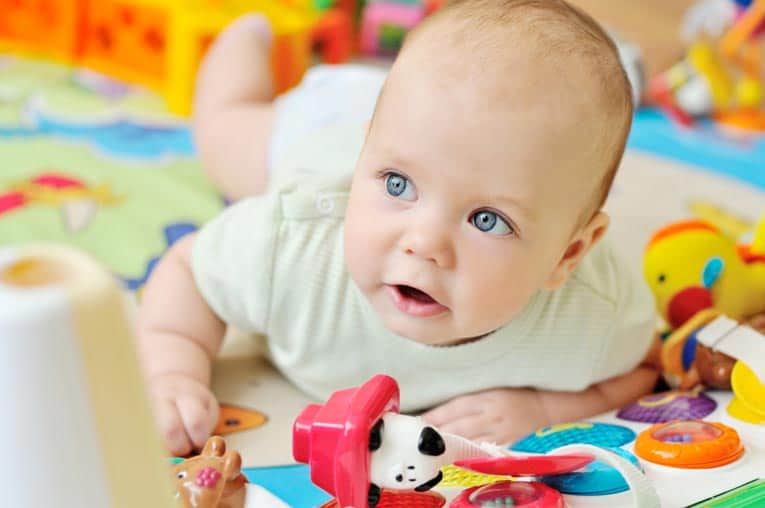

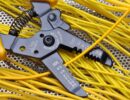
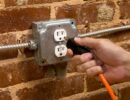

 Don Vandervort writes or edits every article at HomeTips. Don has:
Don Vandervort writes or edits every article at HomeTips. Don has:
